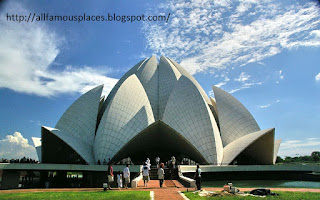The Pashupatinath Temple of Nepal is a popular, sacrosanct Hindu sanctuary committed to Pashupatinath and is situated on the banks of the Bagmati River 5 kilometers north-east of Kathmandu Valley in the eastern city of Kathmandu,the capital of Nepal. This sanctuary is viewed as one of the consecrated sanctuaries of Hindu confidence .The sanctuary serves as the seat of the national divinity, Lord Pashupatinath.This sanctuary complex is on UNESCO World Heritage Sites' rundown Since 1979. This "broad Hindu sanctuary area" is a "sprawling accumulation of sanctuaries, ashrams, pictures and engravings raised throughout the hundreds of years along the banks of the holy Bagmati stream" and is incorporated as one of the seven landmark bunches in UNESCO's assignment of Kathmandu Valley as a social legacy site. One of the significant Festivals of the sanctuary is Maha Shivaratri on which day more than 700,000 aficionados visit here.
The sanctuary was raised once again in the fifteenth century by Lichhavi King Shupuspa after the past building had been devoured by termites. Endless further sanctuaries have been raised around this two - storied sanctuary. These incorporate the Vaishnav sanctuary complex with a Ram sanctuary from the fourteenth century and the Guhyeshwari Temple said in an eleventh century original copy.Pashupatinath Temple is the most seasoned Hindu sanctuary in Kathmandu. Be that as it may, as indicated by Nepal Mahatmaya and Himvatkhanda,the divinity here increased awesome acclaim there as Pashupati, the Lord of all Pashus, which are living and additionally non-living creatures. Pashupatinath Temple's presence goes back to 400 A.D. The lavishly ornamented pagoda houses the consecrated linga or blessed image of Lord Shiva. There are numerous legends portraying in respect to how the sanctuary of Lord Pashupatinath came to presence here. Some of them are described beneath:-
The Cow Legend
Legend says that Lord Shiva once took the type of an impala and brandished obscure in the backwoods on Bagmati waterway's east bank. The divine beings later got up to speed with him, and getting him by the horn, constrained him to resume his awesome structure. The broken horn was adored as a linga however extra time it was covered and lost. Hundreds of years after the fact a bewildered herders discovered one of his cows giving the earth milk. Burrowing profound at the site, he found the celestial linga of Pashupatinath.
The Linchchhavi Legend
As indicated by Gopalraj Vamsavali, the most established ever annal in Nepal, this sanctuary was constructed by Supuspa Deva, a Linchchhavi King, who as indicated by the stone engraving raised by Jayadeva 11 in the patio of Pashupatinath in 753 AD, happened to be the ruler 39 eras before Manadeva (464-505 AD).
The Devalaya Legend
Another narrative expresses that Pashupatinath Temple was as Linga formed Devalaya before Supuspa Deva developed a five story sanctuary of Pashupatinath in this spot. As the time passed, the requirement for repairing and revamping this sanctuary emerged. It was redesigned by Ananta Malla adding a rooftop to it. A great many pioneers from everywhere throughout the world come to pay respect to this sanctuary, that is otherwise called 'The Temple of Living Beings'.
Different convictions
There are a few unpredictable stories including the inceptions of Pashupatinath. One story goes, in a nutshell, that Shiva and Parvati went to the Kathmandu Valley and rested by the Bagmati while on an adventure. Shiva was so awed by its magnificence and the encompassing backwoods that he and Parvati changed themselves into deers and strolled into the timberland. Numerous spots in the Kathmandu Valley are distinguished as spots where Shiva made a go at amid his time as a deer. Before long the individuals and divine beings started to hunt down Shiva. At long last, after different entanglements, they discovered him in the woods, yet he declined to take off. More entanglements resulted, in any case Shiva declared that, since he had lived by the Bagmati in a deer's structure, he would now be known as Pashupatinath, Lord of all creatures. It is said that whoever came here and observed the lingam that showed up there would not be reawakened as a creature.
Finding of Shiva Linga at Pashupatinath Temple
It is said that the wish-satisfying dairy animals Kamadhenu took cover in a hollow on the Chandravan mountain. Regular Kamadhenu went down to the spot the lingam was indented into the dirt and poured her drain on top of the dirt. Following ten thousand years a few individuals saw Kamadhenu pouring milk on that same spot regular, and began to ponder what that would be. So they uprooted the dirt and discovered the excellent sparkling lingam.















